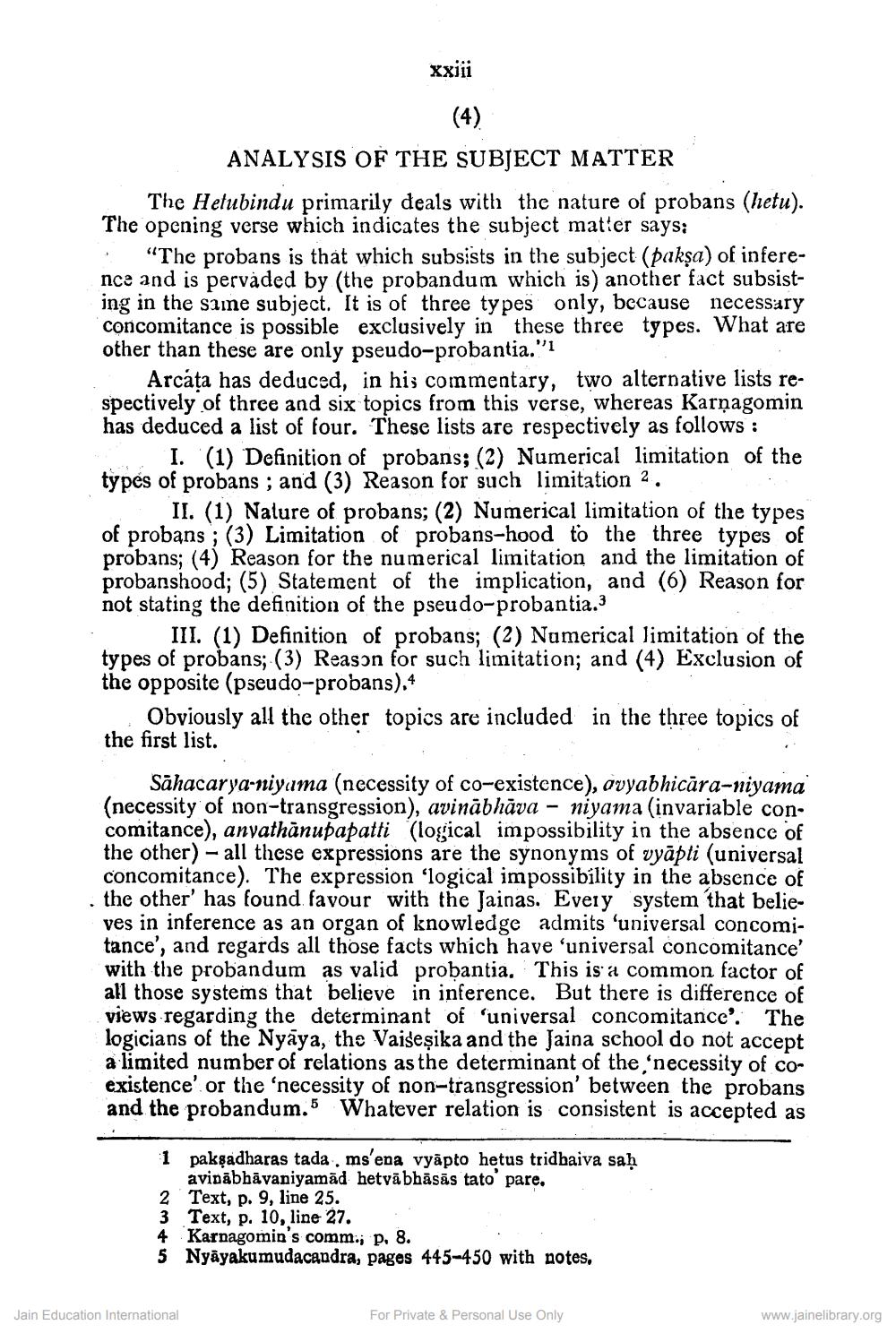________________
xxiii
ANALYSIS OF THE SUBJECT MATTER The Hetubindu primarily deals with the nature of probans (hetu). The opening verse which indicates the subject matter says:
"The probans is that which subsists in the subject (paksa) of inference and is pervaded by (the probandum which is another fact subsisting in the saine subject. It is of three types only, because necessary concomitance is possible exclusively in these three types. What are other than these are only pseudo-probantia."1
Arcáta has deduced. in his commentary. two alternative lists respectively of three and six topics from this verse, whereas Karṇagomin has deduced a list of four. These lists are respectively as follows :
1. (1) Definition of probans; (2) Numerical limitation of the types of probans; and (3) Reason for such limitation 2.
I I. (1) Nature of probans; (2) Numerical limitation of the types of probans; (3) Limitation of probans-hood to the three types of probans; (4) Reason for the numerical limitation and the limitation of probanshood; (5) Statement of the implication, and (6) Reason for not stating the definition of the pseudo-probantia.3
III. (1) Definition of probans; (2) Numerical limitation of the types of probans; (3) Reason for such limitation; and (4) Exclusion of the opposite (pseudo-probans).
Obviously all the other topics are included in the three topics of the first list.
I
Sähacarya-niyama (necessity of co-existence), avyabhicāra-niyama (necessity of non-transgression), avinābhāva – niyama (invariable concomitance), anyathānupapatti (logical impossibility in the absence of the other) - all these expressions are the synonyms of vyāpti (universal concomitance). The expression 'logical impossibility in the absence of the other' has found favour with the Jainas. Every system that believes in inference as an organ of knowledge admits 'universal concomitance', and regards all those facts which have 'universal concomitance' with the probandum as valid probantia. This is a common factor of all those systems that believe in inference. But there is difference of views regarding the determinant of 'universal concomitance'. The logicians of the Nyāya, the Vaidesika and the Jaina school do not accept a limited number of relations as the determinant of the necessity of coexistence' or the 'necessity of non-transgression' between the probans and the probandum.5 Whatever relation is consistent is accepted as
1 pakşadharas tada .ms'ena vyāpto hetus tridhaiva sah
avinābhāvaniyamād hetyābhāsās tato pare, 2 Text, p. 9, line 25. 3 Text, p. 10, line 27. 4 Karnagomin's comm.; p. 8. 5 Nyāyakumudacandra, pages 445-450 with notes,
Jain Education International
For Private & Personal Use Only
www.jainelibrary.org




